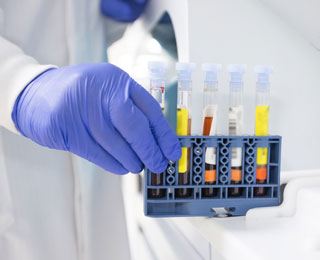Biopsies have long been a been a standard step in diagnosing cancer. But technological advances in detecting circulating tumor cells from blood samples are pushing this so-called liquid biopsy technique closer to everyday clinical practice. How quickly liquid biopsies will become a standard part of cancer care is a matter of debate, however.

In a 2013 Clinical Chemistry review article, co-authors Klaus Pantel, MD, PhD, and Catherine Alix-Panabières, PhD, suggested liquid biopsies could become commonplace within 3-5 years. In contrast, a New York Times article published in April claimed widespread use of circulating tumor cell counts has been slowed by a lack of research proving the method’s usefulness.
Pantel and Panabières proposed that circulating tumor cell counts are most likely to be useful for diagnosing breast and prostate cancers. This method may have less utility with other cancer types, such as ovarian cancer, because it is unclear whether the dissemination of tumor cells in the blood reflects the progression of the tumor.
Previous research indicates that in approximately 10-30% of patients, metastatic cells have certain characteristics that are distinct from the bulk of the primary tumor. “These are exactly the cases where liquid biopsy is most useful, because the mere analysis of the primary tumor can be misleading for the stratification of targeted therapies,” says Pantel. He added that one of the most promising possibilities for liquid biopsy is that it “might enable a real-time monitoring of the response of metastatic cells to systemic anti-cancer therapies.”
Yet the New York Times article pointed out that while studies show those who have a large number of tumor cells circulating in the bloodstream have an increased likelihood of death or a worsening of their conditions, experts are unsure how to use this information in daily practice. Scott Kopetz, MD, associate professor at the M.D. Anderson Cancer Center in Houston, told the Times that “to tell someone you have a high chance of a cancer coming back but we don’t know what to do” is not helpful.
Studies are underway to evaluate whether liquid biopsy can improve outcomes, and efforts are ongoing to create tests that can not only count tumor cells, but also analyze their characteristics, the Times article reported.